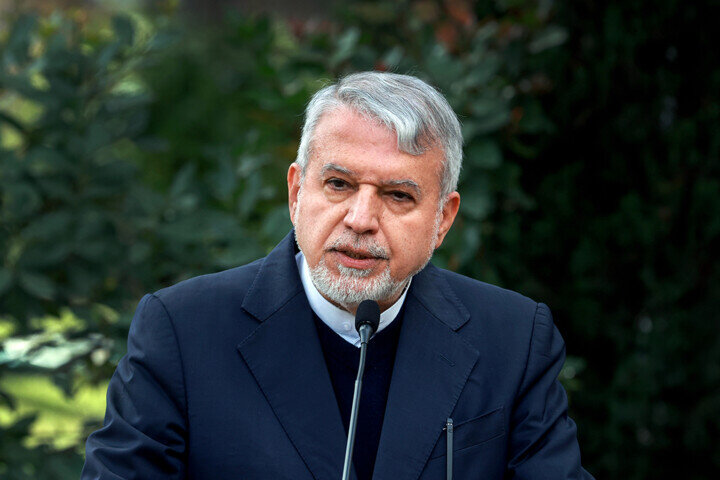Cultural heritage is a pillar of unity: minister’s message to intl. festival

SHIRAZ - The Minister of Cultural Heritage, Tourism, and Handicrafts, Seyyed Reza Salehi-Amiri, shared a message to mark the opening of the 3rd International Multimedia Festival of Cultural Heritage, emphasizing the profound connection between cultural heritage and national unity.
Salehi-Amiri began his message by highlighting that Iranian culture embodies the wisdom of its people in harmonizing with their environment, a recognition achieved through engagement with cultural heritage.
The minister described tangible and intangible cultural heritage as mirrors reflecting the material and spiritual values of this land.
Understanding and presenting this heritage require deep, immersive encounters that foster awareness and authenticity, the minister underlined.
He further noted that every brick of the Aqa Bozorg Mosque, every verse by Sadi, each note of traditional Iranian music, and every artifact in museums echo the foundations of Iranian culture. These cultural elements illuminate the best path for the nation’s future.
He underlined that introducing Iran through its cultural heritage evokes the most authentic image of the country. “Iran's identity can be explored through the works of poets like Hafez, philosophers like Avicenna, traditions like Nowruz, and the architectural marvels of ancestors. Such cultural expressions serve as the backbone of national unity, dispelling discord and fostering friendship and respect within the country.”
Every brick of the Aqa Bozorg Mosque, every verse by Sadi, each note of traditional Iranian music, and every artifact in museums echo the foundations of Iranian culture, the tourism minister said.
Cultural heritage, according to Salehi-Amiri, acts as a bridge for dialogue and solidarity. It transcends political boundaries, as seen in figures like Nizami Ganjavi or structures like Taq Kasra, which, though not within modern Iran's political geography, are integral to its cultural identity. This broader cultural concept of Iran facilitates international dialogue, contributing to global peace and friendship.
Salehi-Amiri also emphasized the importance of presenting cultural artifacts and elements accurately to uncover the hidden narratives they carry.
He highlighted the role of modern media and technologies in revealing the stories embedded in historical artifacts, thereby engaging the broader society with the rich depth of Iranian culture. “Cultural heritage, in this context, becomes an honest, unadulterated medium for conveying the essence of Iranian-Islamic culture.”
In conclusion, the minister underscored the significance of the International Multimedia Festival of Cultural Heritage as a unique opportunity to present and appreciate this irreplaceable treasure from new perspectives. He expressed hope that the festival would strengthen national unity, present an authentic image of Islamic Iran to the global community, and enhance the communal responsibility for protecting Iran's cultural and historical heritage.
Organized by Fars province’s cultural heritage department, the festival aims to deepen public engagement with cultural heritage through multimedia tools, fostering better preservation and community involvement.
AM
Leave a Comment